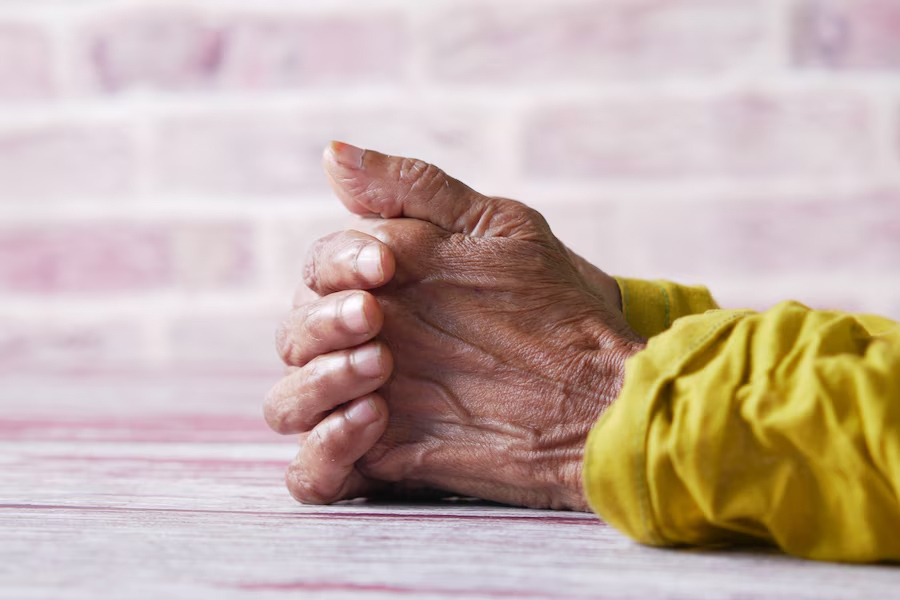
If you're between the ages of 55 and 79, shaking hands, or hand tremors, should be looked at by a doctor. Men, more than women, are at risk of developing Parkinson's disease, which is a progressive degenerative disorder of the nervous system that leads to hand tremors. But hand tremors alone cannot confirm a Parkinson's diagnosis, as it can also be caused by ageing, certain medications, other brain disorders, and alcohol use. This is why it is crucial to pay attention to other associated symptoms of Parkinson's.
Table of Content:-
In an interaction with the OnlyMyHealth team, Dr Shruti Satish Vadke, Consultant - Neurology, Manipal Hospital, Baner, Pune, discusses Parkinson's disease signs that go beyond hand tremors.
Also Read: Brett Favre's Parkinson's Diagnosis Raises Concerns Over Football's Connection to Brain Disease
Why Parkinson’s Disease Causes Hand Tremors

Hand tremors are one of the first motor symptoms of Parkinson's disease. A person's motor skills help them use their muscles to do normal tasks like sit up, walk, crawl, and more. When these get disrupted, the body tends to lose control over its movements.
About 70-90% of people with Parkinson's disease experience a tremor at some point in their lives, as per the Parkinson's Foundation. While these tend to be less common in younger people, it can still be one of the most visible symptoms.
According to Dr Vadke, although many brain areas are affected in Parkinson’s disease, the most common symptoms result from the loss of neurons in an area near the base of the brain called the substantia nigra. These neurons produce dopamine, which is a chemical messenger that sends signals in the brain to produce smooth, purposeful movement.
“Studies have shown that most people with Parkinson’s disease have lost 60-80% or more of the dopamine-producing cells in the substantia nigra by the time symptoms appear,” says Dr Vadke, adding that a decrease in dopamine production is the main cause of Parkinson's disease's effects on the brain's capacity to control movement.
Hand tremor occurs when there is an imbalance between excitatory and inhibitory signals in the brain motor pathways. This means hand tremors happen when the brain's movement control system sends mixed signals, more signals to move and fewer to stay put.
These tremors usually begin in a person’s hand, although sometimes the person’s foot or jaw is affected first. Parkinson’s disease-triggered tremor is often characterised by a rhythmic back-and-forth motion. Often, the tremor will cause the person to rub their thumb and forefinger together, which may appear as “pill rolling,” describes Dr Vadke. “It is most obvious when the hand is at rest or when a person is under stress. This tremor usually disappears during sleep and may improve when the person makes a purposeful, intended movement,” she adds.
To differentiate it from other benign causes, note the duration of the tremors. Tremors associated with Parkinson’s may become increasingly apparent over time, affecting everyday tasks like writing or steadily holding objects.
Also Read: Gastro Problems Could Heighten Parkinson's Disease Risk By 76%: Study
Signs Of Parkinson’s Disease That Go Beyond Hand Tremors

Most people, when they think of Parkinson’s, they only visualise a shaking hand. However, signs and symptoms often go beyond hand tremors. These include:
- Bradykinesia, or slower movements
- Muscle stiffness, even in the absence of pain
- Less animated facial expressions, sometimes called a "masked face"
- Subtle changes in handwriting, such as smaller, cramped letters
- Sleep disturbances, such as acting out dreams or having restless sleep
- A softer or more monotonous voice
- Loss of smell
- Constipation
- Mood changes, especially melancholy or anxiety
Dr Vadke adds that signs can also be picked up from the changes in posture or walking habits in patients. "A shuffling gait, in which the steps get smaller and the foot movement seems less smooth, is a characteristic symptom," she notes.
Additionally, some people can find it difficult to move, swing their arm when walking, or maintain balance, all of which may increase the risk of falls.
Early Detection Is Key

While there is no cure for Parkinson's disease, early detection can help manage the symptoms and delay the progression of the disease.
Dr Vadke highlights the importance of addressing motor and non-motor symptoms early through treatments like dopamine replacement therapy and changes in lifestyle, such as physical therapy and exercise.
Steps To Take If You Notice Signs Of Parkinson’s Disease
If you suspect Parkinson's, there are a few steps you can take to confirm your diagnosis. First and foremost, it is crucial to seek medical assistance as soon as you develop signs. A neurologist can help with a comprehensive evaluation, including clinical evaluations and imaging studies if necessary.
If and once you have the diagnosis, making lifestyle changes, like getting regular exercise, can help you stay mobile and flexible. Social interactions and cognitive exercises can also promote mental health, which managing stress and having good sleep hygiene may help improve overall symptom control.
Dr Vadke concludes by saying that early treatment, whether it be therapy, medication, or lifestyle changes, can have a major impact on long-term quality of life if Parkinson's disease is diagnosed.
How we keep this article up to date:
We work with experts and keep a close eye on the latest in health and wellness. Whenever there is a new research or helpful information, we update our articles with accurate and useful advice.
Current Version